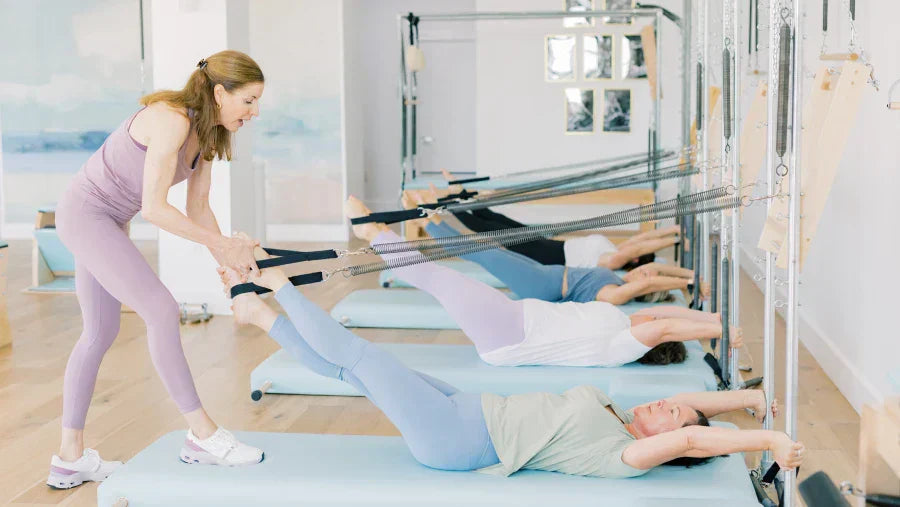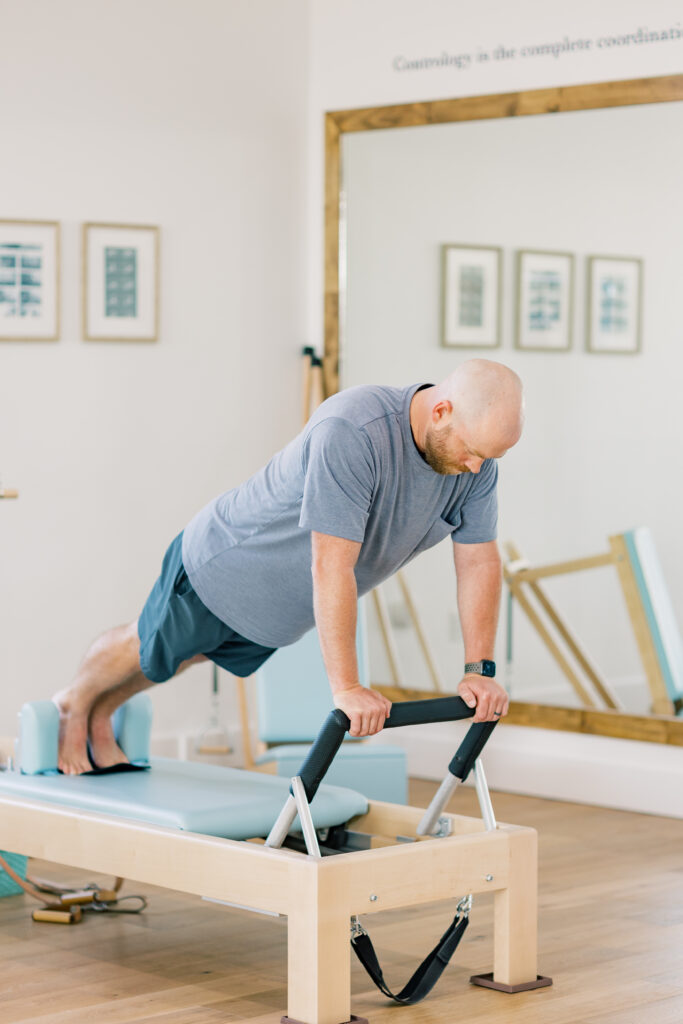In his book, Return to Life, Joseph Pilates clearly states and reiterates the woven thread of purposeful intent and philosophy throughout the Method for ultimate conditioning, health, and wellbeing. It is really a simplistic philosophy. Uniform development in the body for the intent of the following: enhanced breathing, improved circulation and oxygenation (the internal shower), and spinal and major joint health with healthy range of motion. All of this is for the end goal of optimal health and unity of body, mind, and spirit.
When one is informed of what the Method looks like at his fullest, largest expression at the advanced level, as well as, what the body, the tissue, the vibrancy, and the health looks like in that expression; it allows for reverse linear thought process and a deeper comprehension of the beginner level of exercises. It even goes one step further to the basic fundamental movement skills. Being able to identify this type of conceptual continuity in the Method can be applied in three aspects:
1) Taking a fundamental movement skill in the body and understanding its relational connection to another fundamental movement skill in a different area of the body. Furthermore, connecting two of these skill concepts into one simplified thought tailored to the client’s individual needs for the sake of improving upon the motor nervous system and uniform development. This is the Link System!
*I have listed some examples of Fundamental Movement Skills at the end to reference if needed.
2) Identifying and addressing the Link System in terms of the client’s individual needs/imbalances and carrying the same theme/concept all the way through the order and progression of exercises in a session. Also, moving forward into the future and linking session after session together as a purposeful, direct, and clear path to ultimate, whole health for the client.
3) Being able to think both linear directions in terms of the Link System between the exercises and levels: Example:
A. Taking a Level V exercise and breaking it down into its elemental movement skills and understanding how to identify, instill, and teach those in the beginner exercises and to beginner leveled bodies, so it will establish and ingrain new neural connections within the body. Furthermore, over time these profound neural connections will be strengthened becoming more automatic and readily available when multilayered and called upon in a Level V exercise.
B. The vice versa: taking a Level I exercise and being able to see that exercise in more progressed layered versions of itself in higher leveled exercises.
C. Troubleshooting and critical thinking when confronted with a client’s need for modification related to any of the following: limitations due to injury, pathological disease, imbalances (tightness/weakness/limited ROM, etc.). When one understands what fundamental skill sets make up an exercise, then the instructor can think, “Okay, how can I help or modify this exercise, so this client can still achieve the basic purpose and intention of the exercise for the sake of uniform development, the internal shower, and overall health?” No matter how modified the exercise has to be, can one still envision what it would look like in its most advanced, vibrant expression/even a version of the exercise on a different piece of apparatus? (Ex: a very modified version of Corkscrew on the Mat in comparison to Corkscrew on the Reformer) Also, would teaching this exercise (for example: Swan) on a different apparatus be more appropriate for the particular client’s success in terms of instilling the skills and connections needed? Then, over time, the client will build up to executing its more challenged versions on the differing apparatus.
When one starts seeing the connections pervasively throughout the Method as a layered matrix, one understands the Link System and the Pilates Method from a comprehensive perspective. To teach the Link System is to truly understand the comprehensive classical approach to the Pilates Method on an enlightened and profound level. It entails seeing the the big picture and having a keen clarity of the intention, end goals, and philosophy Joesph Pilates had for his life’s work. When one is aligned with this perspective due to experiencing and embodying its miraculous powers and intelligence, it leaves one really committed to staying true to the Method.
Some Examples of Fundamental Movements (For Reference).
- Pilates Abdominal Scoop
- Pelvic Girdle Movement/Pelvic Girdle Stabilization
- Shoulder Girdle Movement/Shoulder Girdle Stabilization
- Shoulder Joint Movement/Shoulder Joint Stabilization
- Upper Spinal Flexion
- Spinal Extension
- Spinal Rotation
- Lateral Spinal Flexion



